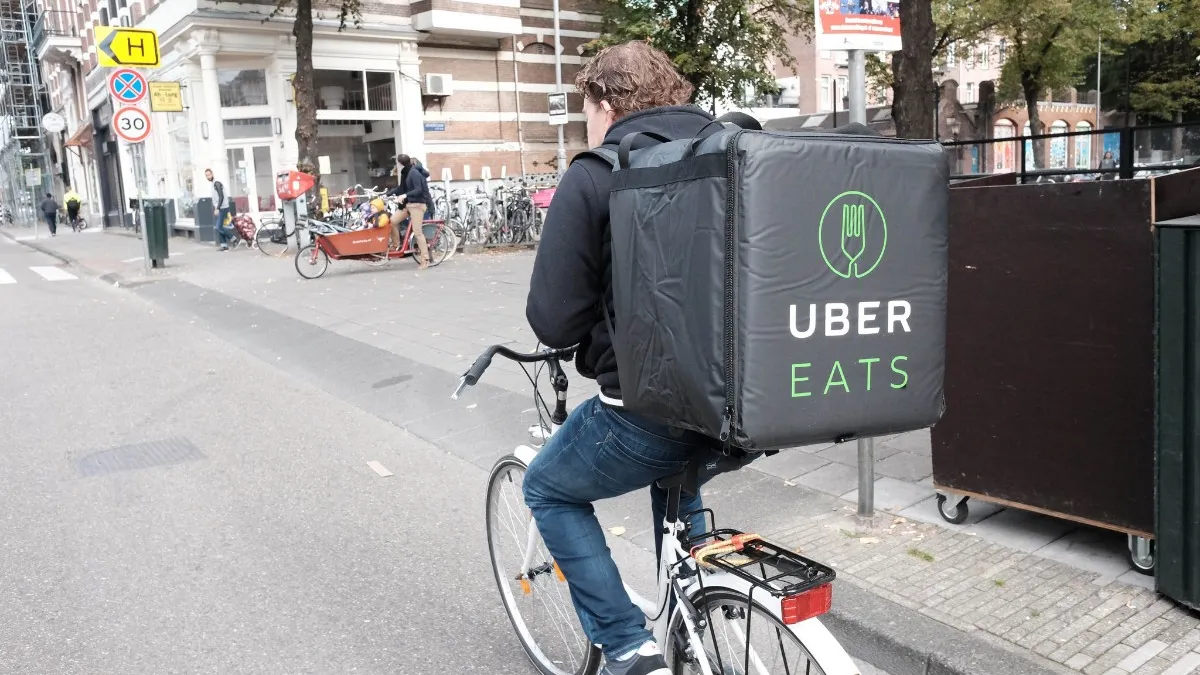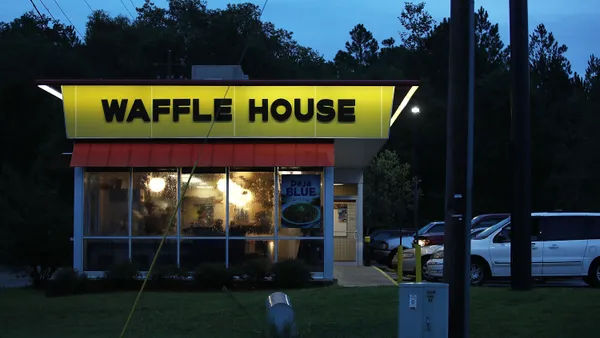Dive Brief:
- Uber Eats plans to reduce its cap on the fees it charges restaurants in the U.K. and Ireland from 35% to 30%, according to Financial Times.
- The company will also offer a marketplace in the U.K., Ireland and the Netherlands that will allow restaurants to use the app but provide their own delivery drivers, similar to how Just Eat functions. The fee to use this service will be 13% compared to Just Eat's 14%.
- Uber Eats also is planning to sell its India business to Swiggy, India's largest food delivery company, according to Bloomberg.
Dive Insight:
While the U.S. delivery market is still reaching scale, other markets have progressed into pricing battles and consolidation, providing a bit of a preview of what is to come.
As its parent company Uber nears a potential public offering, Uber Eats' moves are becoming much more careful. It appears to be targeting markets where it can make an impact, such as the U.K.'s roughly $4 billion food delivery industry, which got a little less crowded when Amazon Restaurants shut down its London business last year.
Additional competition from Uber Eats isn't likely welcome news to Just Eat, which has been under increased pressure from an activist investor to grow more quickly amid growing rivals. The criticism led to its CEO Peter Plumb stepping down in January. Following the announcement from Uber Eats, Just Eat's shares dropped 5% on Thursday, but have since rebounded. There have also been rumors of Uber potentially buying Deliveroo, which would give Uber Eats even more market share in the region.
Meanwhile, Uber Eats' move in India appears to be quite strategic. Its potential departure from the region will allow for Swiggy, which raised $1 billion in December, to continue to dominate India's $8 billion food delivery market, but Uber Eats may grab a share of the company similar to its moves in nearby countries.
Uber has already been shedding its ridesharing business in China, Russia and Southeast Asia ahead of its expected public offering, according to Bloomberg. Last year it sold its food delivery business in Southeast Asia to Grab, but took a 27.5% stake in the company, according to the New York Times. It did the same with its ridesharing business in Russia and Eastern Europe. These transactions allowed for Uber to finally start turning a profit in 2018, which it will certainly want to do once it becomes a public company.















